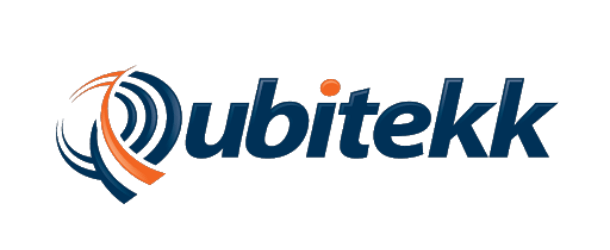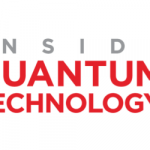Qubitekk: Affordable Quantum Security with Quantum Key Distribution

In this data-dominated era, quantum key distribution (QKD) offers unparalleled encryption for data security. Previously hindered by infrastructure limits and cost challenges, emerging quantum networks, viable multi-user schemes, and the use of QKD for bulk and line encryption of large data pipes are transforming the cybersecurity landscape by improving system efficiency and affordability. Creative implementation strategies and a multi-user approach reduce equipment costs while improving security for pivotal sectors like utilities, finance, and other critical infrastructure.
Quantum Key Distribution (QKD) harnesses quantum mechanics to ensure the secure exchange of encryption keys between parties. Unlike classical cryptographic methods, which can potentially be compromised with increasing computational power unlocked with quantum computers, QKD, such as Qubitekk’s QNEP series, pictured, offers greater security both with symmetric keys and by ensuring any eavesdropping attempt is detectable. By their inherent nature, any observation or measurement of a quantum particle disturbs the system, alerting the communicating parties of any intrusion. By placing the root of America’s cybersecurity on fundamental physical laws, rather than mathematical complexity, these quantum-enabled systems offer an alternative path to secure communications. As a result, QKD promises a cryptographic foundation that remains resilient—even against emerging quantum computers.
The prevalence of optical fiber for broadband and classical networking provided an infrastructure layer ready made for quantum networks dependent on photonic qubits to connect the various quantum computers, sensors, and communications systems. As quantum networks become more common place, this same infrastructure, and the network hardware and control plane software developed in concert with those networks, will provide the physical and data layers necessary for QKD. By reducing time and cost barriers, these networks will significantly hasten broad adoption.
High density applications, such as intercontinental and data center communications, demand robust encryption mechanisms to ensure data integrity. By adding a QKD channel to large data optical fiber bundles, a service provider would achieve bulk encryption with a simple, two-node, point-to-point set-up. Absent the expensive requirement for hardware on every line, QKD provides an affordable solution for these data-intensive applications. This ensures that communication backhaul, be it between continents or within enterprise and cloud data centers, benefit from quantum-grade encryption without exorbitant costs. Attempts to splice into the entire fiber bundle would immediately alert system administrators by severing the quantum channel, precluding brute force “harvest and store” attacks. Additionally, using the same equipment, quantum-derived cryptographic keys would be used to secure the individual fiber lines. Long-haul protection remains “to be developed” with viable commercial-grade quantum repeaters; however, the shorter distance for data center to data center security is readily achievable.
Multi-User QKD extends the technology’s usefulness to serve multiple users or endpoints simultaneously, rather than just a single pair of sender and receiver.[1]
 With a hub-and-spoke topology, this approach reduces hardware requirements, and thereby overall system costs. By sharing a single secret key among all parties, a “lead” node enables each participant to read messages sent by any other authorized participant. This efficiently scales security benefits for broader networks, ensuring that multiple users can securely exchange encryption keys over a shared network, and thus communicate securely. The foundational security principles remain intact in multi-user QKD. Cryptographic keys are exchanged securely, and any intrusion or eavesdropping attempts are immediately identifiable. While there are multiple different optical network topologies, more detailed discussion of these, and their relative strengths and weaknesses, is outside the scope of this paper.
With a hub-and-spoke topology, this approach reduces hardware requirements, and thereby overall system costs. By sharing a single secret key among all parties, a “lead” node enables each participant to read messages sent by any other authorized participant. This efficiently scales security benefits for broader networks, ensuring that multiple users can securely exchange encryption keys over a shared network, and thus communicate securely. The foundational security principles remain intact in multi-user QKD. Cryptographic keys are exchanged securely, and any intrusion or eavesdropping attempts are immediately identifiable. While there are multiple different optical network topologies, more detailed discussion of these, and their relative strengths and weaknesses, is outside the scope of this paper.
Traditional QKD systems are primarily point-to-point, securing communications between two specific endpoints. In contrast, a multi-user approach can secure multiple communications concurrently, making it more scalable for larger organizations where many users need secure, tamper-evident communications, such as governmental bodies or utility networks with numerous endpoints. Moreover, centralized key generation allows efficient single photon detector deployment schemes, such as employing an expensive but efficient superconducting nanowire single photon detector at the hub while using lower cost, lower efficiency detectors at every other node. Instead of dedicating individual setups for each user pair, multi-user QKD optimizes resources by allowing multiple users to share the same quantum infrastructure. While this approach still requires dedicated dark optical fiber between each node and a central server, the reduction in expensive quantum appliances results in cost savings, reduced complexity, and more efficient use of the underlying quantum resources.
In conclusion, incorporating QKD into high data density environments and multi-point architectures represents a quantum leap in data security. As the Department of Energy, finance, and other pivotal sectors navigate the challenges of the digital age, quantum protection for networks stands as the gold standard in cybersecurity.
Sponsored by Qubitek.
[1] https://physicsworld.com/a/multi-party-quantum-key-distribution-paves-the-way-for-quantum-secure-conference-calls/




















